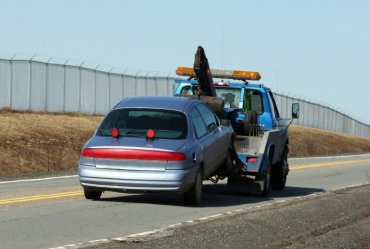Motorcycle helmets may not be a fashion statement, but they can literally save lives. Whether your state requires it or not, it is always recommended that you wear one when riding. Why?
It’s safer
According to the CDC:
- Helmets saved an estimated 1,859 lives in 2016.
- If all motorcyclists would have worn helmets in 2016, 802 more could have been saved.
- Each year, the United States could save more than $1billion in economic costs if all motorcyclists wore helmets.
- Helmets reduce the risk of death by 37%.
- Helmets reduce the risk of head injury by 69%.
In most states, it’s the law
There are 20 states in the U.S. (including D.C.) that have universal motorcycle helmet laws, requiring all riders to wear helmets. All riders are required to wear a helmet in Alabama, California, District of Columbia, Georgia, Louisiana, Maryland, Massachusetts, Mississippi, Missouri, Nebraska, Nevada, New Jersey, New York, North Carolina, Oregon, Tennessee, Vermont, Virginia, Washington, and West Virginia.
In the majority of other states, which have partial helmet laws, minors are required to wear helmets. Only Illinois, Iowa, and New Hampshire have no helmet laws.
In Florida, Kentucky, and Michigan you are required to wear a helmet if you do not have health insurance. Texas requires either proof of insurance or proof of successfully completing a motorcycle operator training course to ride without a helmet.
All helmets in America need to pass Department of Transportation (DOT) standards to be legal. The DOT rating is federal standard FMVSS 218 and any helmet with the DOT sticker should meet these standards. Helmets that meet FMVSS No. 218 have certification labels on the back of the helmet. Helmets manufactured or or after May 13, 2013, are required to have the new DOT certification label:
According to the National Highway Traffic Safety Administration, manufacturers are required under FMVSS No. 218 to place a label on or inside the helmet stating the manufacturer’s name, size, month and year of manufacture, and instructions to the purchaser which includes construction materials and warnings regarding the care and use of the helmet. A helmet that does not meet the Federal safety standard usually does not have such labeling. However, a DOT label on the back of the helmet and proper inside labeling do not necessarily indicate that a helmet meets all DOT requirements. Some helmets may have counterfeit DOT certification labels, and a limited few may also have manufacturer’s labeling.
It can save you money
Wearing a helmet while riding a motorcycle may not directly impact your insurance rates, but helmets do reduce the severity of injuries. They can also save you from having to file claims that will cost you more later.
The states with universal helmet laws may have cheaper medical-related claim costs, which can reduce insurance costs, but that savings likely has minimal or no impact on riders. Unhelmeted motorcycle riders who are injured in a crash and admitted to hospitals face substantially higher healthcare costs than do helmeted riders. Many of these states specifically require that you wear a Department of Transportation (DOT)-approved helmet, which can range widely in cost and quality.
According to the Insurance Institute for Highway Safety, Highway Loss Data Institute, economic costs saved in states with universal helmet laws were, on average, nearly four times greater per registered motorcycle than in states without such a law. You can also take a Motorcycle Safety Course to potentially reduce your rates.
Components of a Helmet
Four parts make up a motorcycle helmet: the outer shell, impact-absorbing liner, padded comfort layer, and retention system/chin strap. When looking for a helmet, you want one that has top of the line features in all four components.
The outer shell is the outermost, colored part of the helmet you view from the outside. This part is usually made of Kevlar, carbon fiber, polycarbonate, molded plastics, or a combination of those materials. It’s what protects your head from debris hitting it, or it hitting the road.
The impact absorbing liner is on the inside of the outer shell and is typically made from EPS (expanded polystyrene) foam. This liner absorbs shock and displaces energy during an impact. The padded comfort layer is the area that your head rests against while you’re wearing the helmet and typically consists of an open-cell foam that is covered in a second cloth material, designed to wick away sweat and keep you cool while riding.
The retention system or chin strap is secured below your chin to keep the helmet on your head while you ride. It’s usually made from a woven material and fastened with two d-rings to stay secured.
Other compliments include vents to help keep your head cool, cheek pads for comfort, and face shields or visors to keep weather or environmental hazards (bugs) off your face.
Types of Helmets
Let’s look at the different types of helmets and some of their features to help you decide which one is best for you. Motorcycle helmets come in 6 types: full-face, modular, open-face, half, off-road, and dual-sport.
Full-face
Offering the most coverage around your head and neck, the full-face helmet is considered the safest type of motorcycle helmet to protect you from potential impact. The chin protector is part of the helmet structure. You can get one that has an attached visor, so no need to wear glasses for protection, or one without.
Modular
Also known as a flip-up helmet, modular helmets are a mix between an open-face helmet and a full-face helmet. This is because the chin bar and visor can flip up to open the front of the helmet.
Open-face
Open face helmets, also known as a 3/4 helmet, cover the top back and sides of your head while leaving your face exposed.
Half
Covering just the top of your head and the area from your forehead to your brows, the half helmet provides minimal protection.
Off-road
Just as their name suggests, off-road helmets are designed to ride on dirt roads. Many of these helmets do not pass the DOT standards. Be sure to check for the certification labels on the back of the helmet.
Dual-sport
Dual sport helmets are a mix between an off-road helmet and a full-face helmet. Similar to off-road helmets, not all are DOT approved, so make sure to check before buying.
What to Consider
Safety
Since 1974, all motorcycle helmets are required to meet the DOT standard that establishes the minimum level of protection a helmet must afford each helmet user. According to the CDC, full-face helmets offer the most protection, protecting the eyes and face with a face shield and providing protection to the chin.
For an extra safe helmet, look for a Snell certified helmet. The Snell helmet standards are generally higher than the required safety standards of the DOT—based on actual testing of actual helmets.
MIPS (multi-directional impact protection system) is a new helmet technology that is being used by a number of different helmet brands, primarily in the motocross world. This new technology is designed to reduce rotational motion by absorbing and redirecting rotational energies and forces transferred to the brain from angled impacts to the head.
Technology
High-tech has also reached the helmet world, with many including built-in Bluetooth speakers, which let you use your smartphone while riding, giving you access to navigation, music, and hands-free calling right inside your helmet.
Fit
Fit is essential to finding the best helmet for you. Each manufacturer’s helmet will fit slightly differently. Newer helmets are using lighter materials to reduce the strain on your neck and additional padding for extra comfort. The best way to find out which fits best is to simply try them on and decide which one works for you.
Regardless of which kind of helmet you choose, you want to hit the open road feeling safe and protected. You can protect yourself and your motorcycle with affordable motorcycle insurance from Freeway Insurance. Get a motorcycle insurance quote online or give us a call at 800-777-5620 to get started.



